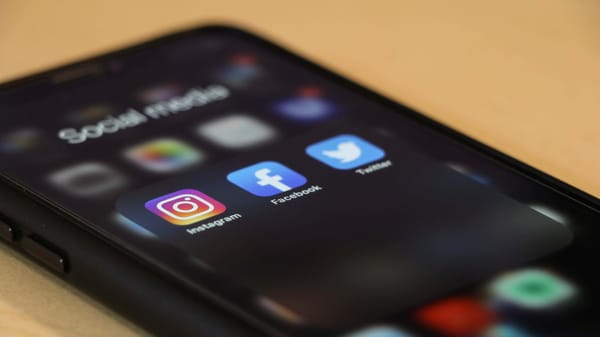I’m a big fan of account-based marketing (ABM). I like how it forces B2B marketers to be specific about which companies and job titles they are trying to reach and engage. No made-up “Clark the CIO” personas with ABM. Just real people, with real roles, at real companies.
This approach makes it easier for marketing and sales to truly align around initiatives that are more likely to grab the attention of the right contacts at these strategic accounts.
Of course, the dirty little secret with ABM is that most prospects are probably happy with their existing vendors and have zero interest in learning about your awesome products or services. And while that may be bad news for the demand generation team it’s not for us social media marketers. Why? Because we’re all about building awareness, credibility, and trust before buyers are ready to play the field with new vendors.
Here’s how you can leverage social media to support your ABM initiatives.
Social advertising campaigns boost ABM visibility
If you haven’t considered social ad campaigns to support your ABM program, now is a good time to start. Even a few thousand dollars of monthly budget can help your brand stay top-of-mind for decision-makers at target accounts throughout their buyer journey. And you should consider both LinkedIn and Facebook (yes, you read that right) for these paid social campaigns.
Both LinkedIn and Facebook allow you to build custom audiences by uploading CSV files of target accounts, expand your audiences using “lookalikes” to reach more people at these companies, take advantage of video ads, and integrate lead generation forms. LinkedIn is better at targeting by companies and titles, while Facebook has more reach plus a much lower cost-per-click.
Here are some tips to keep in mind:
- Social media is driven by discovery, whereas search marketing is driven by intent. This means the right paid social approach is to craft campaigns that move target contacts from discovery to interest to intent. Video ads are great for discovery, non-gated blog post ads work well for interest, and gated whitepapers and webinars work best for intent campaigns. Said another way, if you dive in with intent-based demand generation campaigns right off the bat, you shouldn’t be surprised by the poor campaign results.
- Make sure you’ve got the Twitter, Facebook, and LinkedIn pixels on your website before launching any paid social campaigns. Retargeting website visitors and anyone who engaged with prior social ad campaigns is the key to moving target contacts through the discovery to interest to intent stages in a way that generates the results you’re looking for.
- Consider buying intent data on “in-market buyers” from vendors such as Bombora, ZoomInfo, and G2. Just keep in mind that yes, these contacts may have “intent” around a product category, but that doesn’t mean they’re familiar with your brand or product. So treat these contacts as if they are still at the discovery or interest stage when it comes to your social ad campaigns.
- Consider testing ads on Facebook before running LinkedIn campaigns. Using Facebook Dynamic Creative, you can test multiple ad versions (text, graphics, CTAs) and then use the top performers to help inform your LinkedIn ad campaigns. And did we mention that the average cost-per-click on Facebook is much lower than on LinkedIn?
💸 What ABM is and why it’s important for driving revenue
🔎 How to identify and prioritize target accounts
🧠 Best practices for creating and delivering personalized content
🥇 How to measure the success of your ABM strategy
Get your hands on your ABM playbook now and get ready to start driving growth for your business! 🚀
Social media outreach campaigns
Social ABM is not limited to paid social campaigns. You definitely want to engage prospects using organic social media, too. Here are the steps to take:
- Start with 25 to 50 target accounts and have someone on the marketing team (interns!) look up the Twitter and LinkedIn handles for the people that match the job titles you’re interested in. You’ll most likely end up with 100 to 150 names and social handles in a spreadsheet.
- Come up with the right “offer” to engage the contacts you’ve looked up. For instance, invite them to VIP virtual events, ask them to provide quotes for executive bylines, or even be a guest on an upcoming podcast episode or webinar panel discussion.
- For those contacts with a Twitter handle, you can tweet reply them via the company handle. Here’s an example: @carterhostelley Hi Carter, we’re hosting a VIP roundtable for B2B marketing agency owners. We think you’d have a valuable perspective to share. Interested in joining? Here’s a link to more info: [link]
- If you’re reaching out via LinkedIn, you’ll need one or more folks from the marketing and/or sales team to message the contacts directly (since you can’t message via your company page). Just stick with a short and non-salesy outreach message similar to the Twitter outreach example.
- Keep in mind the goal is to build awareness and engagement, so any replies from contacts are icing on the cake. Generally, social outreach campaigns can get engagement rates of 20% to 60%, plus for every 10 to 15 contacts you reach out to, you’ll usually get one or two who say, “Yes, tell me more…”
- It’s good to maintain a regular drumbeat of one or two social outreach campaigns every month, and as you work through your contacts spreadsheet, make sure and note who engages so you can keep moving them through the “discovery to interest to intent” stages with your organic social media efforts, too!
Now it’s your turn
Have you been doing paid or organic social ABM? What have you found that works or doesn’t?
Want to learn more about B2B social media? Check out the Leadtail blog.
This article was originally published on CMSWire.




 Follow us on LinkedIn
Follow us on LinkedIn


